Tomatoes are one of the most rewarding crops any gardener can grow. Their bright red fruits are not only delicious but also versatile, perfect for salads, sauces, and snacks straight off the vine. Whether you’re an experienced gardener or just starting out, growing tomato plants can be both enjoyable and fruitful when done correctly. With the right techniques, care, and attention, you can enjoy a bountiful harvest of juicy tomatoes right from your backyard, balcony, or garden bed.
This comprehensive guide will walk you through every step of tomato cultivation—from selecting the right variety and preparing the soil to planting, caring, and harvesting for the best results.
Why Grow Tomatoes?
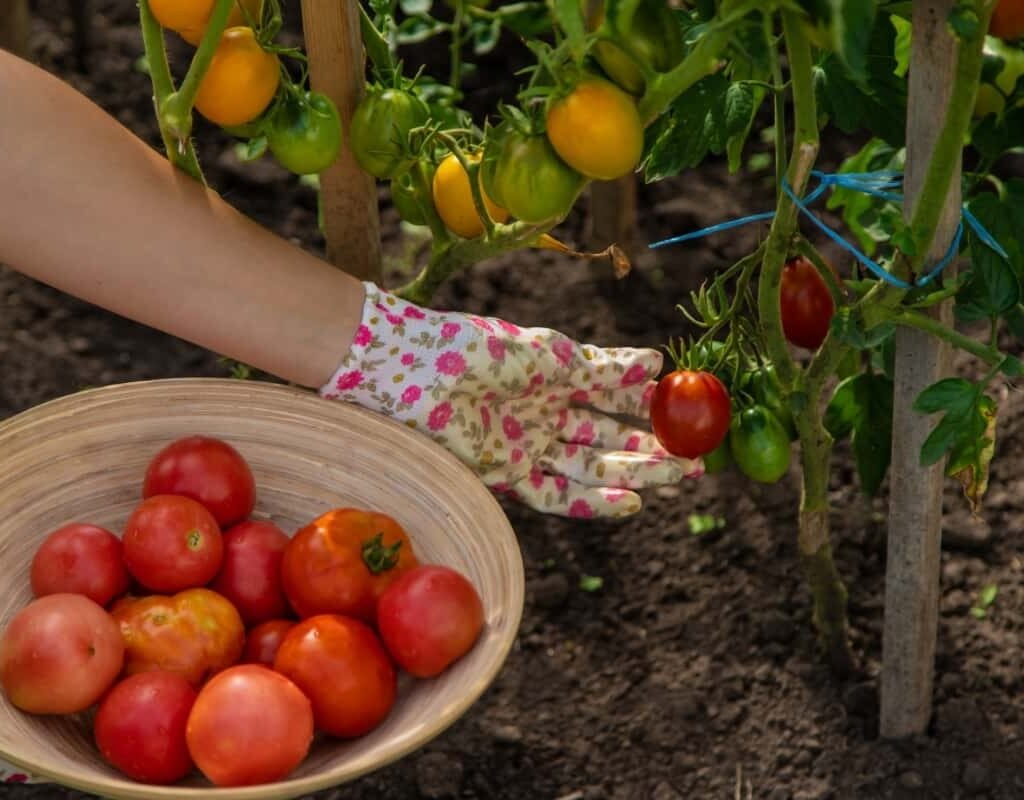
Before diving into the how-to, it’s worth understanding why tomatoes are such a favorite among gardeners:
- Nutrient-rich: Tomatoes are packed with vitamins A, C, and K, potassium, and antioxidants like lycopene.
- Versatility in the kitchen: They can be eaten raw, cooked, roasted, dried, or blended into sauces and soups.
- Easy to grow: With some sunlight, good soil, and care, tomatoes thrive in most climates.
- Productive harvests: One healthy plant can yield dozens of fruits.
Step 1: Choosing the Right Tomato Variety
Tomatoes come in many shapes, sizes, and flavors. Picking the right variety is crucial depending on your growing conditions and taste preferences.
- Cherry Tomatoes – Small, sweet, and prolific producers. Perfect for beginners and container gardening.
- Beefsteak Tomatoes – Large and juicy, great for sandwiches and burgers.
- Roma (Plum) Tomatoes – Meaty texture, excellent for sauces and pastes.
- Heirloom Varieties – Unique in color and flavor, but often more delicate.
- Determinate vs. Indeterminate:
- Determinate (bush type) grow to a set height and produce fruit all at once.
- Indeterminate (vine type) grow continuously and produce throughout the season.
Tip: If you’re short on space, choose cherry or determinate types. If you want extended harvests, go for indeterminate varieties.
Step 2: Preparing the Soil
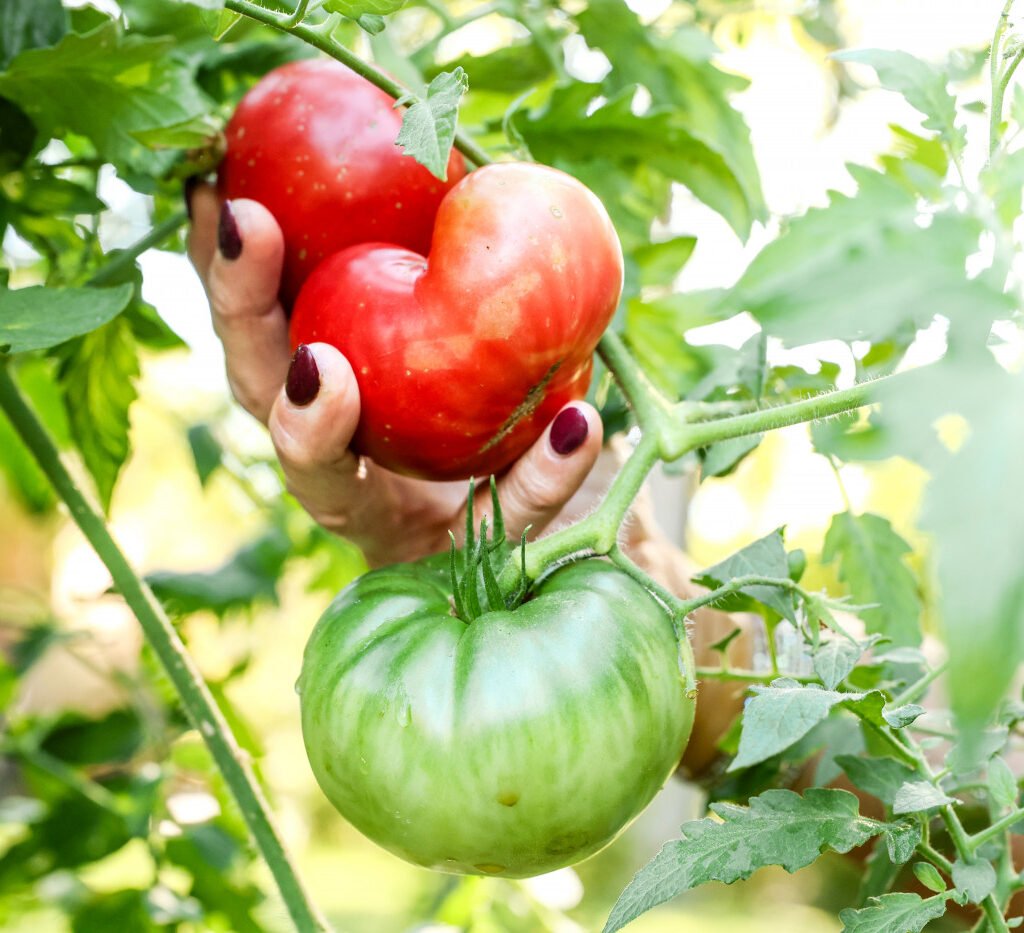
Tomatoes love nutrient-rich, well-draining soil with plenty of organic matter.
- pH Range: Keep soil slightly acidic, between 6.0 and 6.8.
- Amendments: Add compost, aged manure, or organic fertilizers before planting.
- Drainage: Avoid waterlogged soil to prevent root rot. Raised beds or containers are excellent options for control.
Tip: Work in a handful of crushed eggshells or bone meal at planting time to provide extra calcium and prevent blossom end rot.
Step 3: Planting Tomato Seeds or Seedlings
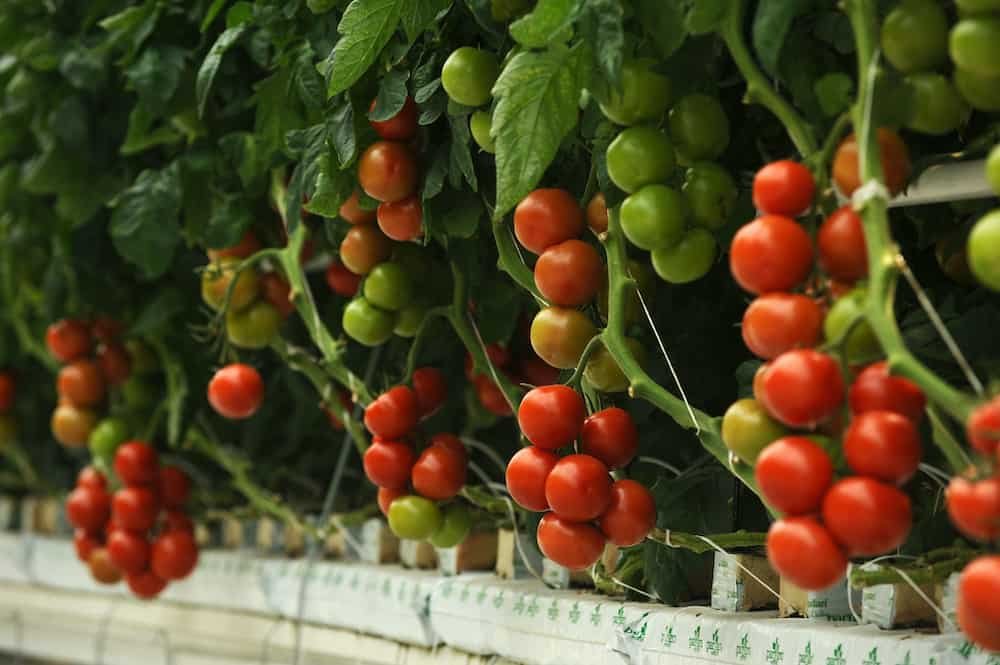
You can start tomatoes either from seeds indoors or purchase young seedlings from a nursery.
Growing from Seeds:
- Start seeds indoors 6–8 weeks before your region’s last frost date.
- Use seed trays or small pots filled with seed-starting mix.
- Provide warmth (70–75°F) and sufficient light—grow lights or a sunny windowsill.
- Transplant seedlings outdoors when they are 6–10 inches tall and all danger of frost has passed.
Transplanting Seedlings:
- Harden off seedlings by gradually exposing them to outdoor conditions for a week.
- Plant deeply, burying two-thirds of the stem underground. Tomatoes develop roots along the buried stem, creating a stronger root system.
- Space determinate plants 18–24 inches apart and indeterminate plants 24–36 inches apart.
Step 4: Providing the Right Growing Conditions
Tomatoes thrive when given the essentials:
- Sunlight – At least 6–8 hours of direct sunlight daily. More sun equals sweeter fruit.
- Temperature – Ideal growing temperature: 70–85°F during the day and above 55°F at night.
- Support Systems – Use stakes, cages, or trellises to keep plants upright and fruits off the ground.
Step 5: Watering and Mulching
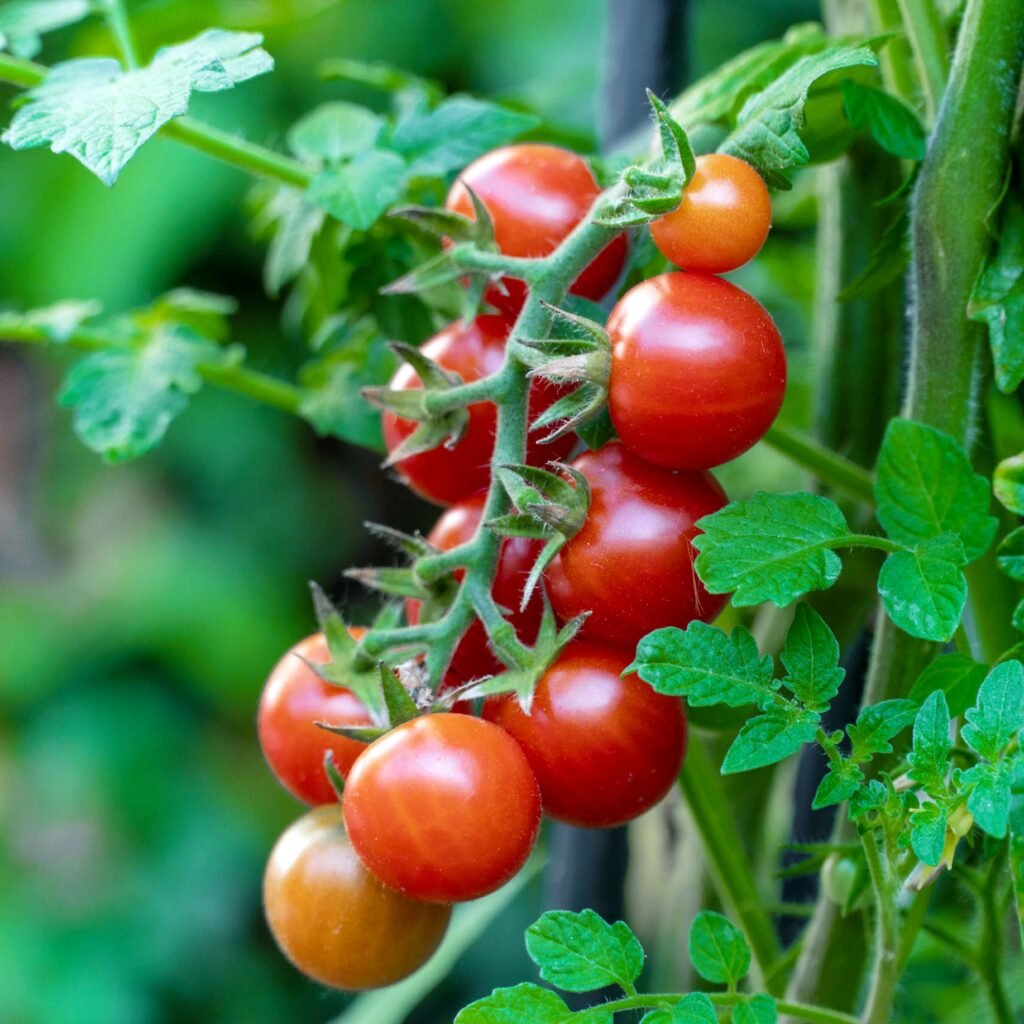
Tomatoes need consistent watering to avoid stress and cracking fruits.
- Watering: Deeply water 2–3 times per week, depending on weather. Avoid overhead watering—water at the base to prevent fungal diseases.
- Mulching: Apply straw, grass clippings, or shredded leaves around the base to conserve moisture, regulate soil temperature, and suppress weeds.
Step 6: Fertilizing for Maximum Growth
Tomatoes are heavy feeders, so proper fertilization is key.
- Before Planting: Mix compost or balanced fertilizer into the soil.
- During Growth: Use a tomato-specific fertilizer or a mix rich in phosphorus and potassium but moderate in nitrogen. Too much nitrogen produces leafy plants with fewer fruits.
- Schedule: Fertilize every 3–4 weeks once fruits set.
Step 7: Pruning and Maintenance
Regular maintenance ensures healthy plants and larger, tastier fruits.
- Pruning Suckers: Pinch off small shoots (suckers) that develop between the main stem and branches. This directs energy toward fruit production.
- Air Circulation: Trim lower leaves to improve airflow and reduce disease risks.
- Weeding: Keep the area around your plants weed-free to prevent nutrient competition.
Step 8: Preventing Pests and Diseases
Tomatoes are prone to some common pests and diseases. Early detection is crucial.
- Pests:
- Aphids, whiteflies, and tomato hornworms.
- Control using neem oil, insecticidal soap, or introducing beneficial insects like ladybugs.
- Diseases:
- Blight, powdery mildew, and blossom end rot.
- Prevent by rotating crops, spacing plants properly, and avoiding water on leaves.
Tip: Companion planting with basil, marigold, or garlic helps deter pests naturally.
Step 9: Harvesting Tomatoes
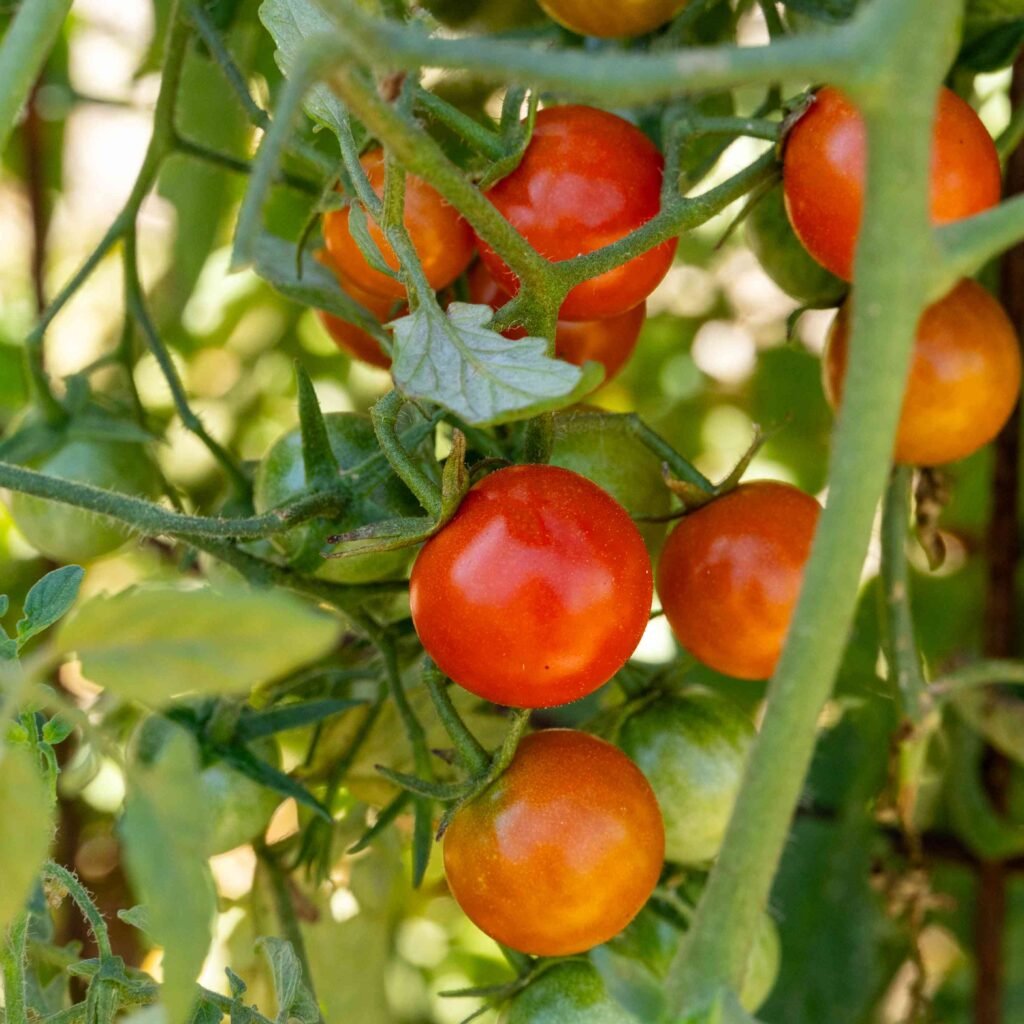
One of the most rewarding stages is picking your tomatoes at peak ripeness.
- When to Harvest: Fruits should be firm, evenly colored, and slightly soft to the touch.
- Ripening Off the Vine: If frost threatens, pick green tomatoes and let them ripen indoors in a paper bag.
- Continuous Harvest: Indeterminate varieties will keep producing until the first frost if well maintained.
Step 10: Storing and Using Your Harvest
- Short-Term Storage: Keep ripe tomatoes at room temperature and consume within a few days. Refrigeration may reduce flavor.
- Long-Term Preservation:
- Freeze chopped tomatoes for sauces and stews.
- Can or jar tomato sauces, pastes, and salsas.
- Sun-dry or oven-dry slices for intense flavor.
Common Mistakes to Avoid
- Overwatering: Causes root rot and split fruits.
- Planting too close: Restricts airflow, increasing disease risks.
- Skipping support: Leads to broken stems and ground rot.
- Ignoring pruning: Can result in overcrowded, weak plants.
- Too much fertilizer: Especially nitrogen, delays fruiting.
Conclusion
Growing tomato plants may seem intimidating at first, but with proper guidance, it’s a highly rewarding journey. By selecting the right variety, preparing the soil, providing adequate sunlight and water, and maintaining your plants with care, you can enjoy a steady supply of juicy, flavorful tomatoes right at home. Whether you’re dreaming of fresh salads, homemade sauces, or simply the satisfaction of picking ripe tomatoes from your garden, this guide equips you with the knowledge to achieve abundant harvests.
So roll up your sleeves, plant those seeds, and get ready to enjoy the delightful taste of homegrown tomatoes. Your orchard of juicy harvests is only a season away!






Leave A Comment